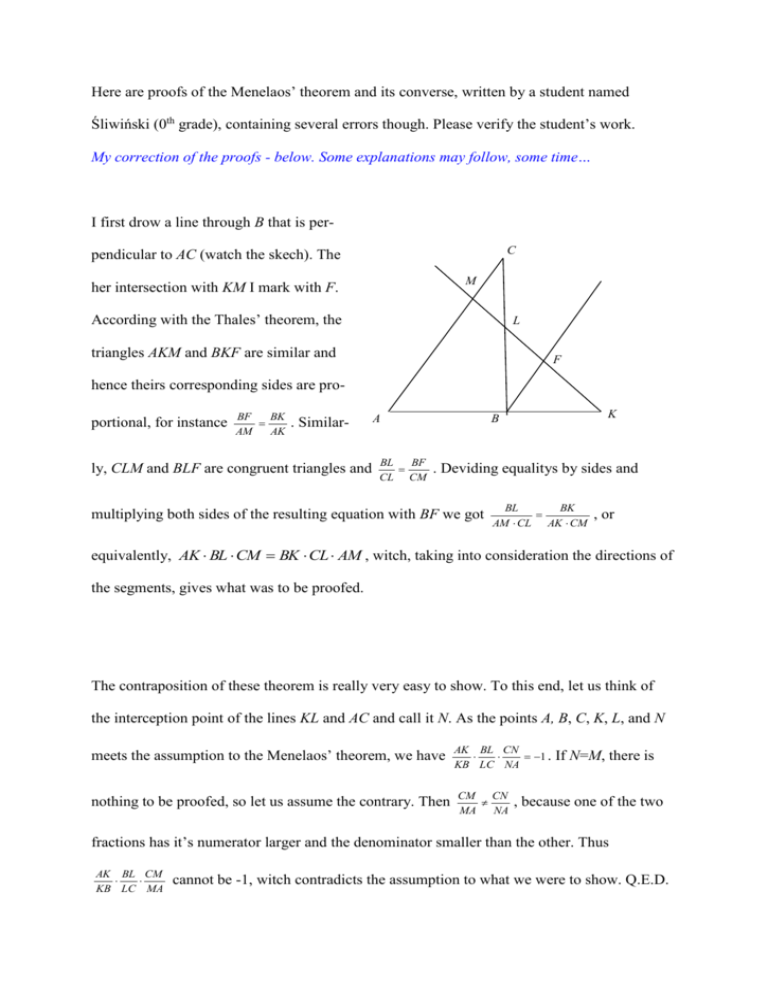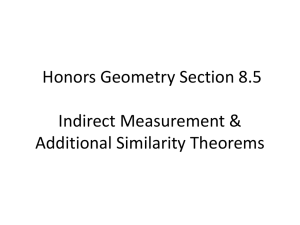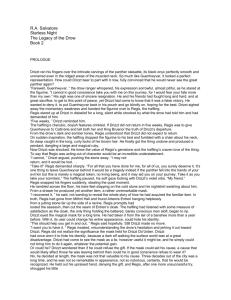Here are proofs of the Menelaos` theorem and its converse, written
advertisement

Here are proofs of the Menelaos’ theorem and its converse, written by a student named Śliwiński (0th grade), containing several errors though. Please verify the student’s work. My correction of the proofs - below. Some explanations may follow, some time… I first drow a line through B that is perC pendicular to AC (watch the skech). The M her intersection with KM I mark with F. According with the Thales’ theorem, the L triangles AKM and BKF are similar and F hence theirs corresponding sides are proportional, for instance BF BK AM AK . Similar- ly, CLM and BLF are congruent triangles and A BL BF CL CM K B . Deviding equalitys by sides and multiplying both sides of the resulting equation with BF we got BL BK AM CL AK CM , or equivalently, AK BL CM BK CL AM , witch, taking into consideration the directions of the segments, gives what was to be proofed. The contraposition of these theorem is really very easy to show. To this end, let us think of the interception point of the lines KL and AC and call it N. As the points A, B, C, K, L, and N meets the assumption to the Menelaos’ theorem, we have nothing to be proofed, so let us assume the contrary. Then AK BL CN 1 . KB LC NA CM CN MA NA If N=M, there is , because one of the two fractions has it’s numerator larger and the denominator smaller than the other. Thus AK BL CM KB LC MA cannot be -1, witch contradicts the assumption to what we were to show. Q.E.D. I first drow draw a line through B that is C perpendicular parallel to AC (watch the M skech sketch). I mark The her its intersection with KM I mark with F. L According with to the Thales’ theorem F (rather: the intercept / ray theorem), the triangles AKM and BKF are similar and A hence theirs corresponding sides are proportional, for instance BLF are congruent similar triangles and BL BF CL CM K B BF BK AM AK . Similarly, CLM and . Deviding Multyplying the equalitys -ies by sides and multiplying dividing both sides of the resulting equation (more formally: equality) with by BF we got get BL BK AM CL AK CM , or equivalently, AK BL CM BK CL AM , witch which, taking into consideration the directions of the segments (rather: vectors), gives what was to be proofed proved (in Amer. English proven is also common). The contraposition converse of these this theorem is really very easy to show. To this end, let us think of the interception point of the lines KL and AC and call it N. As the points A, B, C, K, L, and N meets the assumption to of the Menelaos’ theorem, we have AK BL CN 1 . KB LC NA If N=M, there is nothing to be proofed proved/proven (see above), so let us assume the contrary. Then CM CN MA NA , because one of the two fractions has it’s its numerator larger and the denominator smaller than the other. Thus AK BL CM KB LC MA the assumption to of what we were to show. Q.E.D. cannot be -1, witch which contradicts











